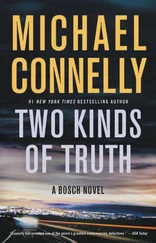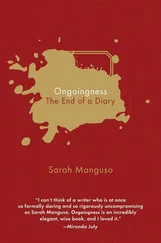I didn’t know it at the time, but I was paying attention. I was not hoping I would learn how to do it, or despairing that I might not learn how to do it. I was unaware that I was learning or practicing or doing anything.
I was unaware I was doing anything except nothing.
One day in Oncology Outpatient, I sat with a woman who was having a bag of blood transfused. She beat me diseasewise — she had cancer — but I beat her linewise, because she had a slim little Hickman and I had my double-lumen monster.
She showed me her bald head under her brown wig and said she liked to shampoo the wig in the shower as if it were her hair.
Her husband had planned to buy her a mink coat on the occasion of their twenty-fifth wedding anniversary, but when she got cancer, she got the coat. She called it her cancer coat. It was dark and glossy, like her wig.
And she shared that she had lost her hair four times and been in many kinds of pain, but she agreed with me that the worst part about being sick was not having enough energy to feel powerful and fast. Not enough energy to run away.
After we’d been talking for an hour or two, the woman asked me what my name was. I was glad I hadn’t suggested it first. We were ready to do it now.
Her name was Barbara.
In December, eight months after the diagnosis, I decided I’d learn how to flush and dress my line. I still needed it. I was on my sixth month of periodic plasma exchange.
So I looked at the entry site with the bandage off, for just a moment, and that was enough progress for a few days.
But I got better at looking at the site, and my visiting nurse made me a booklet of three-by-five cards, tied together by a white string in the top left corner, that explained in steps how to flush and dress the catheter.
Even if I learned how to do it, my nurse would still have to visit me at school each week and look at the line, just to make sure nothing was wrong that I hadn’t noticed.
I was as excited about learning how to care for my central line as my nurse was about visiting me at Harvard.
On my Nursing Visit Summary from December 21, 1995, Fran wrote:
Pt uses excellent sterile technique for flushing line. She also uses excellent technique for dsg Δ . Has some difficulties c  applying Tegaderm. Pt continues to feel stronger. One or two more f/u + pt should be independent c
applying Tegaderm. Pt continues to feel stronger. One or two more f/u + pt should be independent c  care. Next visit 12/23/95.
care. Next visit 12/23/95.
On December 23, a different nurse wrote:
This visit to f/u apheresis care. Pt performs flushing + dsg Δ s error. She is very meticulous. Can be independent c  dsg Δ.
dsg Δ.
I’d go back to school with enough medical supplies so I could care for my line whenever I needed to. This is what I brought:
1 large red biohazard container; 10 cc syringes; 5 cc syringes; 3 cc syringes; saline vials; heparin vials, vial spikes; needle covers; interlink caps; injection caps; adhesive patches in three sizes; gauze pads; nonsterile rubber gloves; individually wrapped “sterile field” kits, each of which included 1 sterile waterproof paper sheet, 1 pair sterile gloves, 1 sterile surgical mask, sterile gauze patches, alcohol swabs, iodine swabs, adhesive compound swabs, 1 roll sterile plastic surgical tape.
I’d meet each week with my nurse and three times a month with a representative from the company that delivered my medical supplies and fetched my biohazard container when it was full. It was a lot to do in addition to my treatment schedule and my classes, especially since I was feeble and couldn’t walk far.
Every couple of days I made a sterile field on my college desk in Dunster J-22 and flushed and dressed my line. Once my two suitemates, who are still my friends, sat on my bed and watched me do it. They watched and asked questions and listened.
I saved most of the flip-off caps from the vials of saline, heparin, and other solutions I infused. Each vial of solution was covered by a sterile bladder that could be pierced by a needle that drew the solution into a syringe. And each sterile bladder was covered securely with a plastic disc, its lip covering the lip of the vial, and each disc was stamped with raised letters that spelled FLIP OFF, because you were meant to press under the lip of the disc with the top of a thumbnail until the disc flipped off onto the floor or some other nonsterile area, so that nothing touched the vial’s sterile bladder.
The FLIP OFF discs were chartreuse, pink, red, black, gray, white, or another color, depending on the solution in the vial.
I stuck the discs on my stereo and on every light switch in my suite. And I gave a lot of them to friends, who stuck them, with putty or with a small rolled-up piece of surgical tape, on their own light switches and on the switches of their electronic machines. Or in the middle of a wall.
I threw out at least a thousand discs. I wish I’d saved more of them. My old suitemates both still have a few.
Tableaux vivants, living paintings, were planned for a winter gala at the Fogg Museum. I was part of a Monet painting and had to wear a pink gown with a plunging neckline. The tube showed. I pulled the bodice up. The top of the bandage still showed. A square of gauze and a frightening bump. I let it show. One girl saw it backstage and turned white and said my name as if she felt she had to.
The way someone says your name when you’re making love and you know it’s the only time you’ll ever make love, and you aren’t thinking about your partner’s name, and you wish he hadn’t said yours.
Except for the very richest and a few others, Harvard upperclassmen live in one of twelve residential houses.
When a large group of homosexuals from my class were assigned to live in a historically preppy house, it was decided that the group would attend the notoriously conservative Eliot House Spring Fête in drag. A friend to the downtrodden, I had to find a tuxedo to wear.
Through a network of teenaged idealists, a tuxedo appeared. It belonged to a classmate whose family’s roots predated the American Revolution and who had attended an excellent private school in New York.
The jacket was navy blue and double-breasted and had gold buttons, and it had belonged to my classmate’s uncle, an admiral.
Though a few times that year I smoked marijuana with a clique of elite private school alums, in their dorm rooms that were nothing like mine — I remember a freestanding antique silver ashtray, and I remember some of the richest students had had their suite condemned for its filth — I knew our lives were already irreconcilable and that I would only ever be a tourist in theirs. And because I knew I was a tourist, I quietly gathered my small knowledge of the natives’ ways and left scant trace of myself.
The lending of the tuxedo was a gesture of superb faith that we — the awake and living of the class of 1996, whether we had come from privilege or not — were, at least for a moment, of one voice. The lending of the tuxedo was a favor by a stranger, an intimate gesture made to benefit the general welfare of homosexuals.
Three years later, my suitemate, who had both kinds of friends, from both private and public schools, asked me whether I would be willing to help the admiral’s nephew.
Читать дальше

 applying Tegaderm. Pt continues to feel stronger. One or two more f/u + pt should be independent c
applying Tegaderm. Pt continues to feel stronger. One or two more f/u + pt should be independent c 










